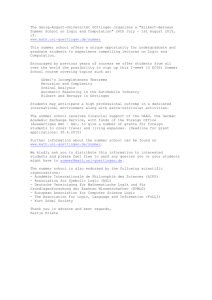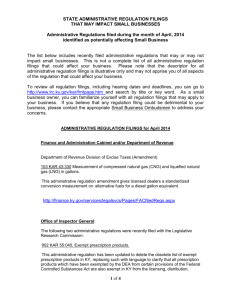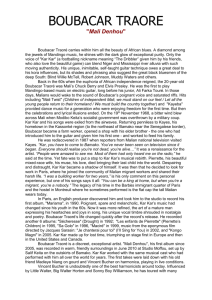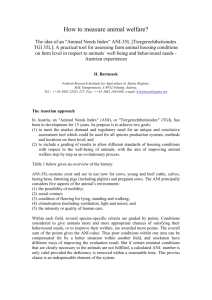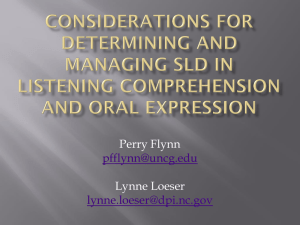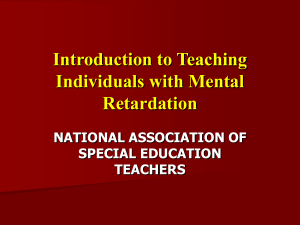OI powerpoint - Big East Educational Cooperative
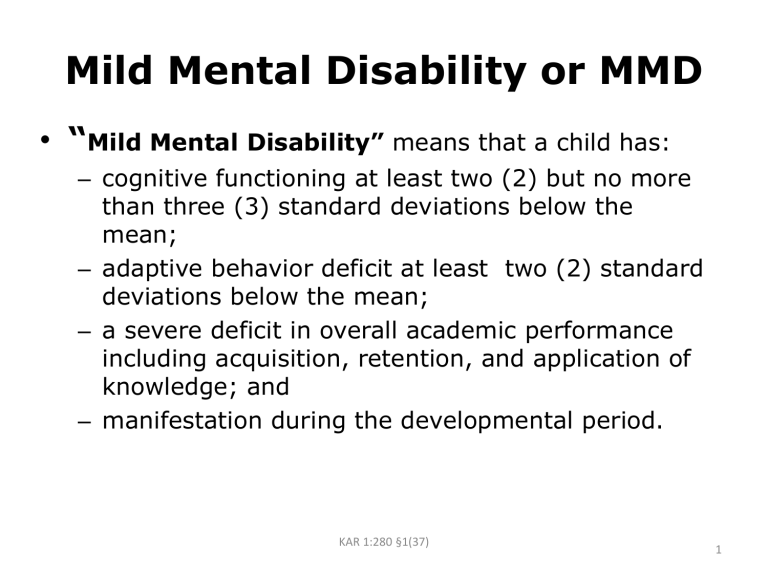
Mild Mental Disability or MMD
• “
Mild Mental Disability” means that a child has:
– cognitive functioning at least two (2) but no more than three (3) standard deviations below the mean;
– adaptive behavior deficit at least two (2) standard deviations below the mean;
– a severe deficit in overall academic performance including acquisition, retention, and application of knowledge; and
– manifestation during the developmental period.
KAR 1:280 §1(37)
1
Typical Characteristics and Needs of
Students Identified as MMD
• Need intermittent to limited support
• No apparent physical differences from nondisabled peers
• Mild to moderate developmental delays
• Identified in school setting:
– Cognitive disability most apparent
MMD (Recognizable Characteristics)
• sit up, crawl, or walk later than other children
• learn to talk later, or have trouble speaking
• find it hard to remember things
• have trouble understanding social rules
• have trouble seeing the consequences of their actions
• have trouble solving problems
• have trouble thinking logically
• have trouble taking care of oneself
Accelerated Performer v.
Performer
• Accelerated performer
– Meets and rises to challenges most obvious factor to recognize
• Performer
– Does pretty much what’s expected
– Typical student with MR
Abstract Thinker v. Concrete
Thinker
• Abstract Thinker
– Elaborates on the concepts presented
– Anticipates the outcomes
– Applies relevance to circumstances
• Concrete Thinker
– Very specific response
– Practical and basic application
Challenged v. Systematic
• Challenged
– Eager
– Invites change
– Exploratory
– Innovative
• Systematic
– Benefits from routines
– Prefers structure
Mental Retardation: Classifications
•
AAMR 1983 Classifications IQ Range
Mild Mental Retardation • 50-55 to 70
• Moderate Mental
Retardation
• 35-40 to 50-55
• 20-25 to 35-40
• Severe Mental Retardation Below 20-25
• Profound Mental
Retardation
Prevalence
• 11% of all students with disabilities are classified with mental retardation
• 611,076 children aged 6-21
• Approximately 2.5% (6 million) of the general population would be classified as mildly retarded
• The remaining 0.5% (over 1 million) would fall into the range of moderate through profound mental retardation.
Common Causes of MR
• Genetic Conditions
• Problems during pregnancy
• Problems at birth
• Health problems
KAR 1:300 §3(2)(3)
9
Eligibility Guidelines for
Mild Mental Disability (MMD)
KAR 1:300 §3(2)(3)
10
MMD Eligibility Guidelines
KAR 1:300 §3(2)(3)
11
Eligibility
12
IQ Scores and Descriptors
IQ Score
130+
120-120
110-119
90-109
80-89
70-79
69 and below
Descriptor
Very Superior
Superior
High Average
Average
Low Average
Borderline
Extremely low, intellectually deficient
13
Adaptive Behavior
KAR 1:300 §3(2)(3)
14
a severe deficit in…
overall academic performance including acquisition, retention, and application of knowledge
KAR 1:300 §3(2)(3)
15
Manifested during the developmental period
KAR 1:300 §3(2)(3)
16
Eligibility (cont.)
Adverse Affect: the progress of the child is impeded by the disability to the extent that the educational performance is significantly and consistently below the level of similar age peers.
KAR 1:280 §1(2)
17
Eligibility (cont.)
Exclusionary Clause: The student is not eligible for services if the ARC determines:
• A lack of instruction in reading
• A lack of instruction in math
• The student is limited English proficient
• The student child does not meet eligibility criteria
KAR 1:280 §1(2)
18
Eligibility (cont.)
KAR 1:300 §3(2)(3)
19
Evaluation Planning Form
KAR 1:300 §3(2)(3)
20
Develop the Evaluation Plan
Based on referral information & eligibility requirements, determine additional information needed
1.Determine needed areas of evaluation;
2.Determine types of personnel to complete evaluation components;
3.Target specific areas for observation;
4.Determine the need for Assistive Technology
Evaluation; and
5.Determine the need for modifications to evaluation procedure(s).
Develop the Evaluation Plan
Small Group Activity
Determining Needed Evaluation Plan
Components
Evaluation Planning Form
KAR 1:300 §3(2)(3)
23
Evaluation Planning Form (cont.)
KAR 1:300 §3(2)(3)
24
Evaluation Planning Form (cont.)
KAR 1:300 §3(2)(3)
25
